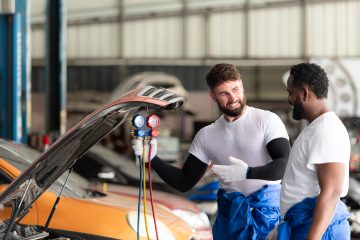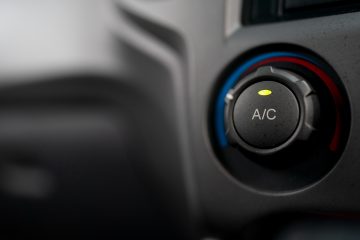Vehicle suspension is a safety-critical item. It can also be one of the more complex systems, with many moving parts, all susceptible to damage from knocks and bumps.
With deteriorating roads across the UK causing an increase in potholes and poor surface conditions, the likelihood of cars entering workshops for suspension work increases. But how are suspension systems developing with modern vehicles, and what should technicians be looking out for to diagnose potential issues in suspension checks?
Watch the latest feature from Auto Repair Focus, How is the suspension market developing? below. You can also subscribe to our YouTube channel, making sure you do not miss any of our in-depth topical features.
Suspension developments
The suspension system on modern vehicles contain many different components. From shocks and springs to bearing some pushes they all work together to keep a car pointing straight and true.
But a knock on a kerb, or driving through a pothole, can alter the geometry. This does not just affect the passenger comfort, as suspension is also responsible for ride-height, braking efficiency and handling as well. Therefore, should there be a problem with a vehicle’s suspension, it will have a bigger impact than just a misalignment.
Faulty or broken suspension is the second most common cause of MOT failures with around 20% of tests failed because of related issues. But just how complex is modern suspension technology and what do technicians need to understand about it?
“Due to the safety critical section or area of steering suspension, it’s imperative that everything is working as it should do, even down to suspension alignments,” commented Nick Weir, Product Director at Motaquip. “This is especially true on modern vehicles because there are so many adjustments that you can do on them.
“The system has become more prone to damage now everything has gone to aluminium due to trying to make the vehicles as light as possible, more efficient. And the condition of the roads at the moment, the number of potholes, it only takes a small knock in the wrong place, in the wrong direction on the suspension to actually physically bend something, and drivers may not realise that it is bent.”
“If the suspension is not aligned properly, it can cause uneven tyre wear, poor handling, and if the impact has been sever enough to have bent a lower arm backwards, the caster angle goes out as well. But with power steering you cannot really feel it as much as was possible on the older cars that have just manual steering.
“But also, depending on how serious the bend is, it could then start to fracture and that’s when it becomes a serious issue.”
Suspension checks
As vehicle technology changes, so too does the suspension system that underpins the platforms.
“Vehicles themselves are becoming heavier, especially when you consider EVs and hybrids,’ commented Kevin Neaverson, Commercial Director at First Line. “And the component parts, if you go back around 20 to 30 years, you may have one, maybe two component parts per wheel. We are now finding maybe six, even eight component parts per wheel on some of today’s cars. Then there’s multi-link suspension there to consider.
Cars are also getting bigger. This, together with increased weight, means they are more likely to hit kerbs and potholes on the sides of roads. The weight also makes the impact heavier, especially at speed.
If ever the system is damaged, or not functioning properly, it could be noticeable,” added Neaverson. “But at the same time, there are so many components involved in today’s cars that they can copy some hidden problems as well. That is why offering a suspension check service is a good way to ensure drivers stay safe, and to ensure that you are able to offer the best level of performance to your customers.”
Despite technology developments, however, suspension is a component system that will endure.
“Although independent workshops need to be ready and react to a growing demand for EV specific replacement parts, regardless of the final outcome from an engine perspective, steering and suspension components are one of the few product groups that are not threatened by the growth in the sales of hybrid and electric vehicles,” highlighted Ann-Marie Dean, National Sales Manager at Dayco.
“Whatever the powertrain and irrespective of whether they are driven by an occupant or autonomously, vehicles will still need to absorb bumps and imperfections in the road and steer around corners. This means that demand for replacement components will be one of the few constants for the long term.”
Poor road conditions
Recent reports have stated that the cost of pothole damage to motorists increased in 2024. The AA attended 643,318 breakdowns related to poor road conditions last year, while the RAC saw 4,707 in the fourth quarter of the year.
This highlights how susceptible suspension is to road damage. Potholes have become a major talking point, and with the increase in awareness comes an increase in repair requirements.
“What distinguishes this product group is that the demand is further stimulated by the generally poor state of the roads, as it’s these parts that must isolate the vehicle’s occupants from the consequences of driving through potholes, over speed humps and up aggressive curb stones, and they often suffer as a result,” added Dean.
“With icy conditions, debris in puddles and floodwaters, roads are becoming more treacherous,” commented Neaverson. “Add into the mix potholes, and over the last 15 years the rise of speed bumps, there are many more opportunities for something to impact the suspension system and cause misalignment or damage.
A good idea?
Offering a free suspension check, especially in the winter months, gives workshops an opportunity to build their customer service. This is crucial in the digital age, when shopping around for vehicle maintenance is easier than ever.
‘A thorough visual inspection is essential,” commented Matt Gates, Director at Partsinmotion.co.uk. “Technicians should look for visible signs of wear, damage or leaks in key components like ball joints, tie rods, bushings, and shock absorbers. “Also, they should check for cracked or split rubber boots on suspension joints, as these can allow contaminants to damage internal components. And they should inspect the power steering system for fluid leaks or deteriorated hoses.
“The best advice is to always replace suspension components like shocks, struts or control arms in pairs to ensure balanced performance and even wear, and should prioritise high-quality OEM or equivalent replacement parts to ensure reliability and durability.”
So, we continued to deterioration of UK roads and more complex components going into suspension geometry, garages have an opportunity to offer free checks and ensure customers are remaining safe on the roads.
Suspension is one of those components is going to be around in any car, no matter what powertrain type is, or whether it is self-driving or human driven.



